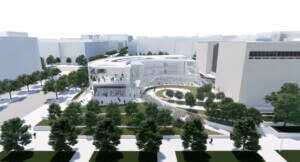Since the pandemic, collaborative momentum has shifted back to the physical workplace, but our work-from-home experience has left an indelible mark. Zoom meetings, digital collaboration tools, and partial work-from-home schedules have fundamentally changed the nature of our workday. How can the design of our workplaces adapt to this new way of working?
At SOM, we have taken the initiative to re-examine long-held beliefs about what the office looks like. Over the past few years, we have designed new offices or major renovations for almost all of our worldwide locations. Through an approach we call “radical reduction,” we have recast our workplaces to support our staff, to harness the value of in-office work, and to minimize our carbon footprint. In designing our new offices, a few critical drivers of change have emerged: an emphasis on health and wellness, specifically through lighting and acoustics; a diversity of spaces reflecting the more fluid nature of today’s workday; and healthy, innovative, low-carbon spaces that drastically reduce our environmental impact.
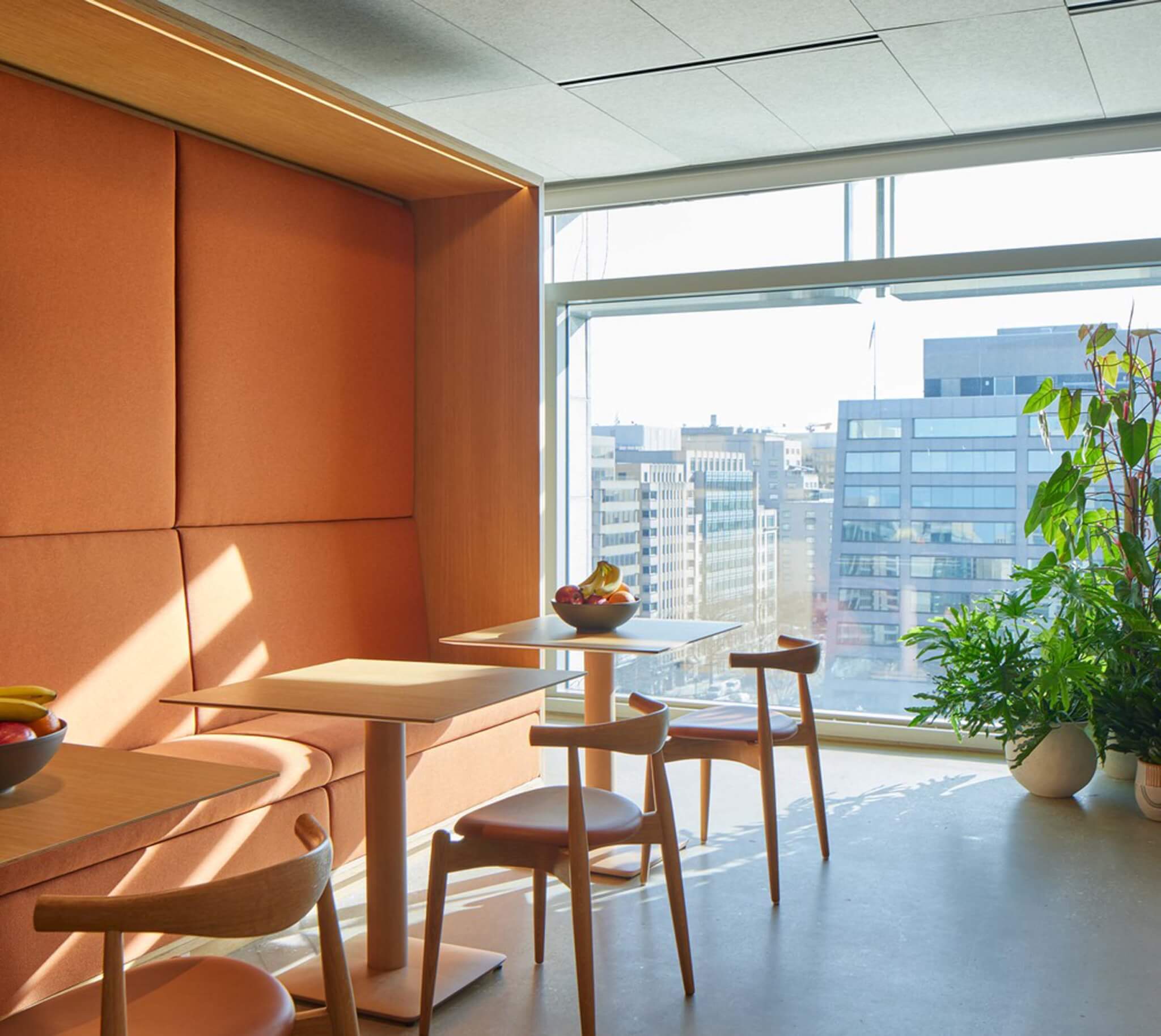
Daylight as Protagonist
In both the Washington, D.C. and New York offices, natural light was the driving force in the planning process. Open work areas were prioritized where daylight was strongest, and all enclosed offices and conference rooms were pushed deeper inside the floorplate. Making natural light the “protagonist” in our space required careful selection of lighting and shading systems to manage daylight. In line with our goal of radical reduction, we utilized automated controls from Lutron to constantly adjust light levels and shade positions. The result is a smart system that automatically reacts to the sun’s movement across the sky—minimizing artificial light and maximizing natural light.
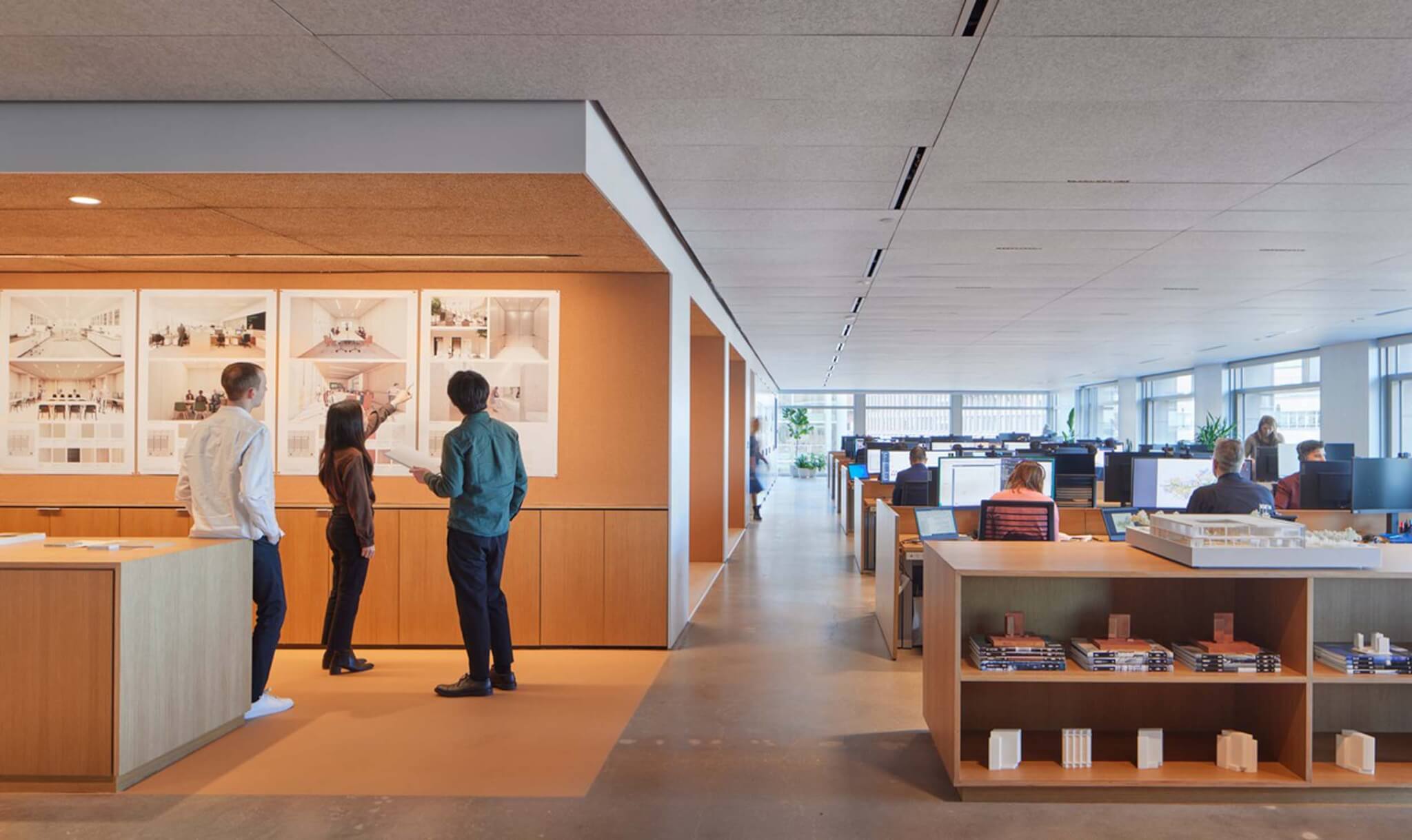
Soft, Tranquil Spaces
Even before the COVID-19 pandemic, we had explored innovative acoustic strategies to create soft and tranquil work environments. Now, the frequency of remote meetings with multiple voices overlapping on different calls has only heightened the importance of absorptive surfaces in open offices. We chose acoustic systems made from felt and shredded wood fibers—both highly sustainable materials—that help create a natural, calming environment even when everyone is on Zoom. Sound absorption became particularly important in conference rooms, where speech intelligibility is a critical factor for remote meeting attendees. We utilized a palette of cork, fabric, and tectum to achieve a greater than 50 percent reduction in reverberation time from our previous offices.
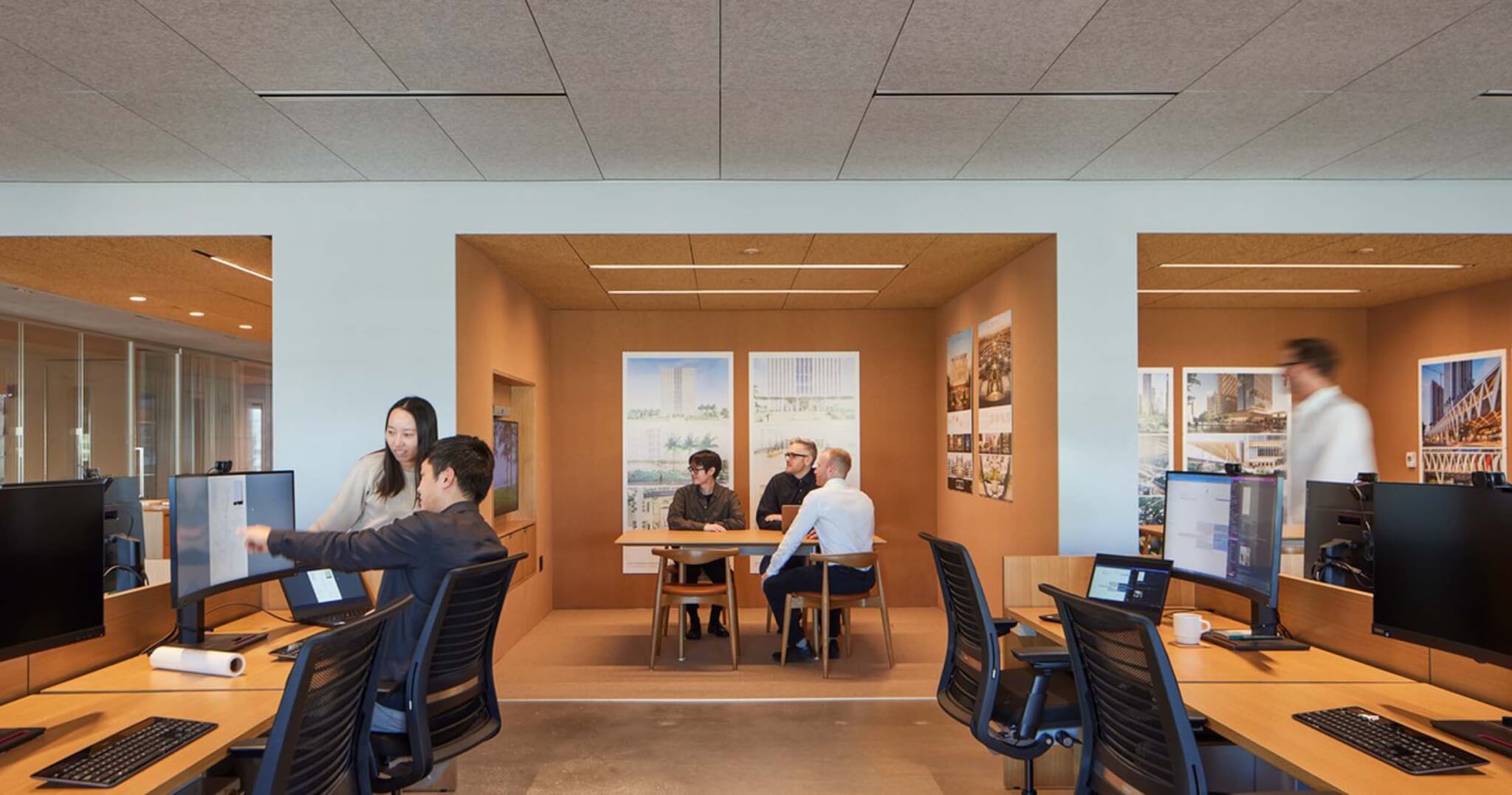
Mobility
SOM’s D.C. location is our first entirely cloud-based office, with all employees utilizing laptops tied to remote servers. This technological shift has unlocked a significant design opportunity for a diversity of workspaces in the office. In addition to traditional workspace needs like desks and large conference rooms, the D.C. office features a gradient of semi-public to semi-private workspaces, such as banquette seating, alcoves, a social hub, private Zoom rooms, and additional small- and medium-sized conference rooms. Employees can design their day based on their personal preferences and tasks, moving from a desk to a quiet room or a lounge space as they see fit, or by using the sit-stand desks at every workstation. In a departure from industry standards, we maintained one assigned desk per employee in order to cultivate a greater sense of belonging in the office, to give everyone their own “home” from which to start and end their day.
Air Quality
As we focus on creating healthy workspaces, we have increasingly turned our attention to interior air quality. In all new SOM offices, we are installing air quality monitors that can track numerous metrics for healthy air and display them in real-time. Looking to the future, these systems lay the groundwork for demand-controlled ventilation, where HVAC systems—like our lighting—can adjust to changing occupancy patterns and deliver greater quantities of fresh air to rooms where people are congregating. These systems have also allowed us to monitor critical metrics: During the pandemic, our studies of CO2 concentrations allowed us to understand how our occupancy patterns impacted infection risk. During the recent Canadian wildfires, we carefully watched PM2.5 levels and made real-time adjustments by identifying faulty filter locations and specific points of infiltration. The result: a high degree of confidence that our office is a safe place to be.
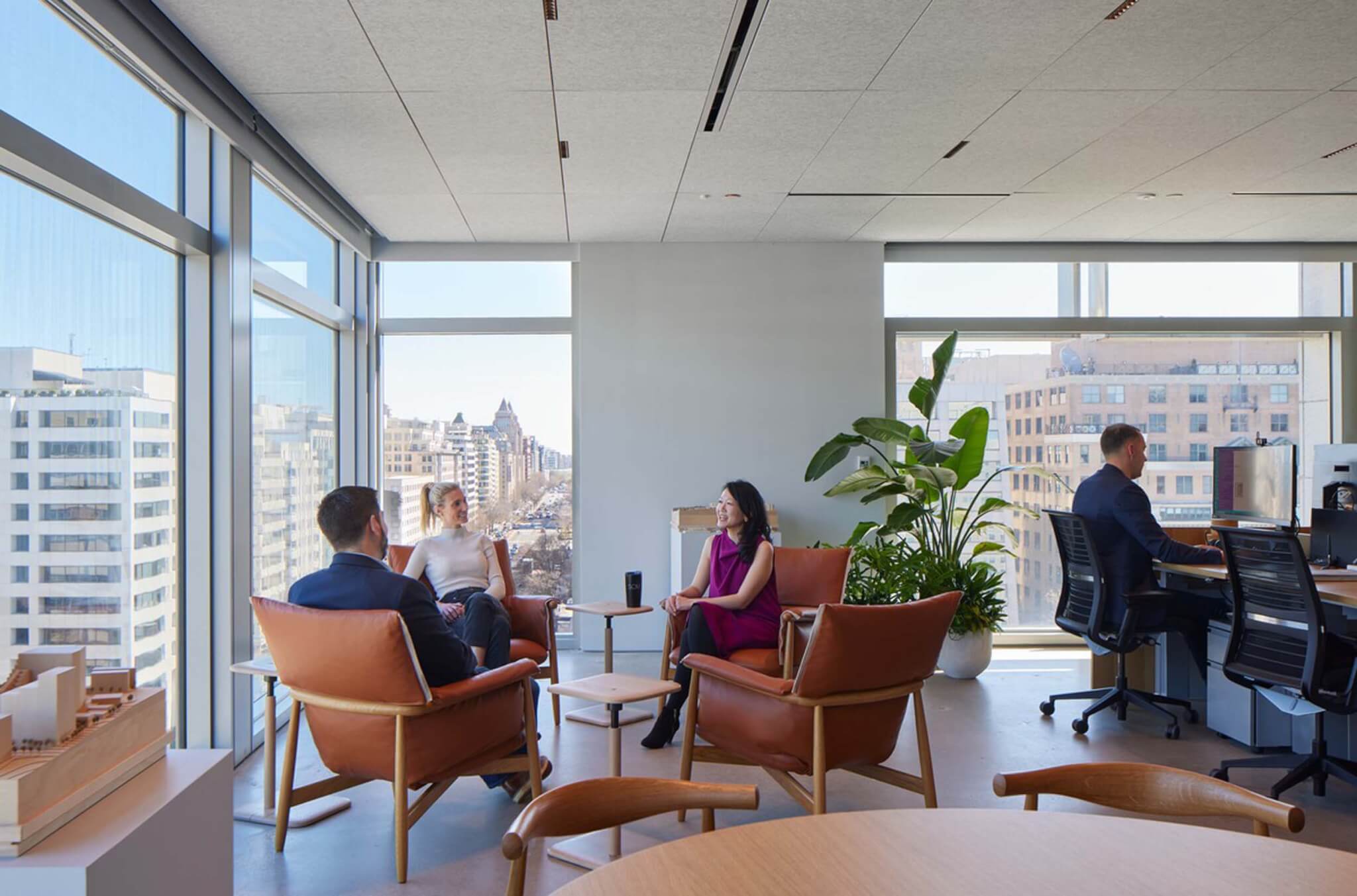
Office of the Future
At the beginning of the pandemic, many people, across all industries, questioned whether we even needed offices. As SOM explores new models for the workplace, we see our offices as a laboratory for new ideas and best practices for the future. Over the past few years, we have seen just how valuable in-person work can be. We go to the office to build community, collaborate, provide mentorship, and to simply be more than the sum of our collective parts. The reasons are many, but the conclusion is resounding—gathering together matters.
Charles Harris is an associate principal at SOM.








